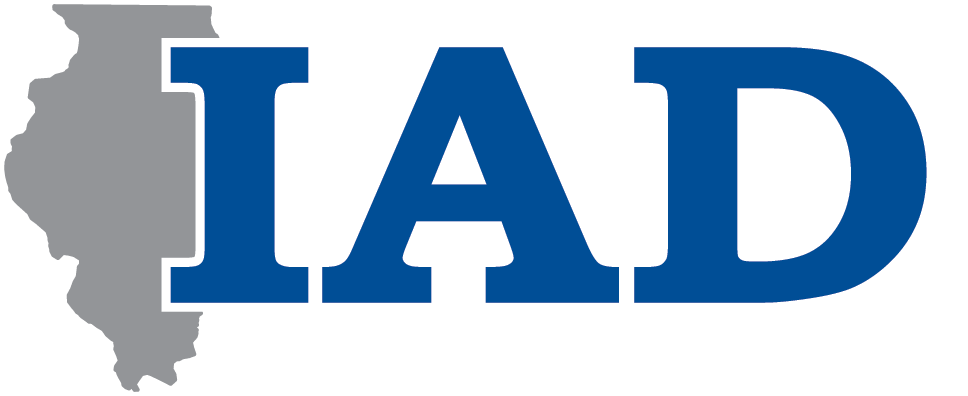Sunday, April 3, 2016
Alexander Graham Bell Association for the Deaf and Hard of Hearing
Attn: Meredith Sugar, Esq
Dear Ms. Sugar:
Your letter in response to the Washington Post’s “The Reliable Source” column on Nyle DiMarco and his successes as a Deaf individual demonstrates the dismissive attitude your organization has continuously projected towards American Sign Language (ASL). Your letter contained erroneous and misleading information with the intent of marginalizing ASL, creating a misconception that Mr. DiMarco’s success as a Deaf individual who communicates using ASL is a rarity and cannot be replicated by other Deaf and Hard of Hearing individuals. The Illinois Association of the Deaf condemns the audistic approach your organization has taken to minimize Mr. DiMarco’s success, one that also irresponsibly dismisses the multitude of benefits of accessing language acquisition through ASL.
The Alexander Graham Bell Association for the Deaf and Hard of Hearing has continuously failed to recognize ASL as a fully accessible, developed visual language and a support of the development of English and reinforcement for literacy in education of individuals who are Deaf and Hard of Hearing. In your letter, you refer to ASL as “just one such option” and that its use is declining, far from the truth and a blatant misrepresentation of how early access to ASL serves a foundation for language acquisition.1
Your organization continues to perpetuate the myth that acquisition of ASL will impede Deaf and Hard of Hearing children’s acquisition of English proficiency and that said children will be severely disadvantaged with lack of access to auditory input, and therefore, auditory language exposure, even if deficient, is the best pathway to resolve this disadvantage. There are recent studies and articles, including one by the American Academy of Pediatrics’ journal discrediting your organization’s position.2
Infants and toddlers are not always able to immediately obtain the benefits of assistive listening technology that is available to process auditory language; further training or therapy is often needed. Further, research has also shown children given listening technology with speech only exposure face an increased risk of being linguistically deprived. 3 Nonetheless, in your letter, you focus primarily on the need for selecting a listening and spoken language outcome for children, but neglect to mention research has proven spoken language development can be enhanced if sign language is also present.4 You also fail to recognize research that confirms that in the absence of a visual language such as ASL, the risk of harm from language deprivation is heightened and cognitive capacities are reduced. Research also indicates Deaf and Hard of Hearing children exposed to signing at an early age perform better academically than those who do not.5
Preparing Deaf and Hard of Hearing children to achieve optimal linguistic fluency in both ASL and English contributes to healthy development of identity and self-esteem, as well as enable these children to later engage in meaningful adult discourse as fully participating, contributing, and productive members of American society. Mr. DiMarco is a living proof of how bilingual approach is the best means of nurturing our children to become intelligent and productive members of our society.
We know your organization stands to lose funding and support from cochlear implant and hearing aid companies if your organization takes the stance of language acquisition through ASL. Your organization has thrived for years on selling the notion to parents that Deaf and Hard of Hearing children will function “normally” like other children who can hear. This has been at the expense of hundreds of thousands of Deaf and Hard of Hearing children being linguistically deprived.
These misleading ways must stop now; Deaf and hard of children must have immediate access to ASL as it improves educational outcomes for Deaf and Hard of Hearing children.
Sincerely,
Illinois Association of the Deaf Executive Board
Corey Axelrod, President
Kevin Ryan, Vice President
Shelley Williams, Secretary
Lisa Roth, Treasurer
Susan Dramin-Weiss, Membership Secretary
cc: Sarah Polus, Washington Post
1 Crume, P., & Singleton, J. (2008). Teacher practices for promoting visual engagement of deaf children in a bilingual school. Paper presented at the Association of College Edducators of the Deaf/Hard of Hearing, Monterey, CA.
2 Mellon, N., et. al. (2015). “Should All Deaf Children Learn Sign Language?” Pediatrics. Volume 136, Issue 1.
3 Davidson, K., Lillo-Martin, D., & Pichler, D. (2014). Spoken English language development among native signing children with cochlear implants. Journal of Deaf Studies and Deaf Education, 19(2), 238-250.
4 Humphries, T., Kushalnagar, P., Mathur, G., Napoli, D., Padden, C., Rathmann, C., & Smith, S. (2012). Language acquisition for Deaf children: reducing the harms of zero tolerance to the use of alternative approaches. Harm Reduction Journal, 9(16).
5 Calderon, R. & Greenberg, M. (1997). The effectiveness of early intervention for Deaf and Hard of Hearing children. In M.J. Guralnick (Ed.). The effectiveness of early intervention: Directions for second generation research. (pp. 455-482). Baltimore: Paul Brookes.






